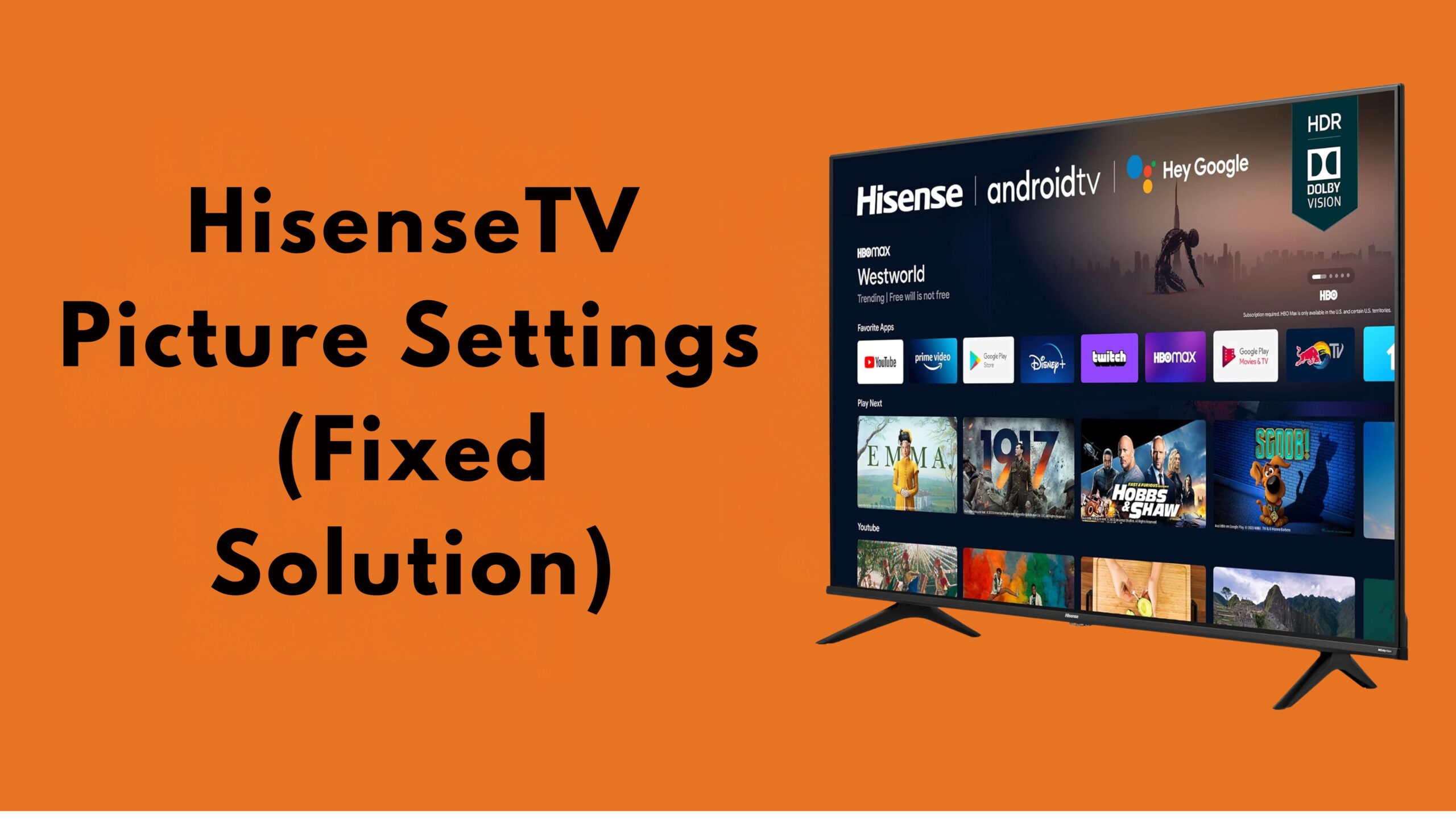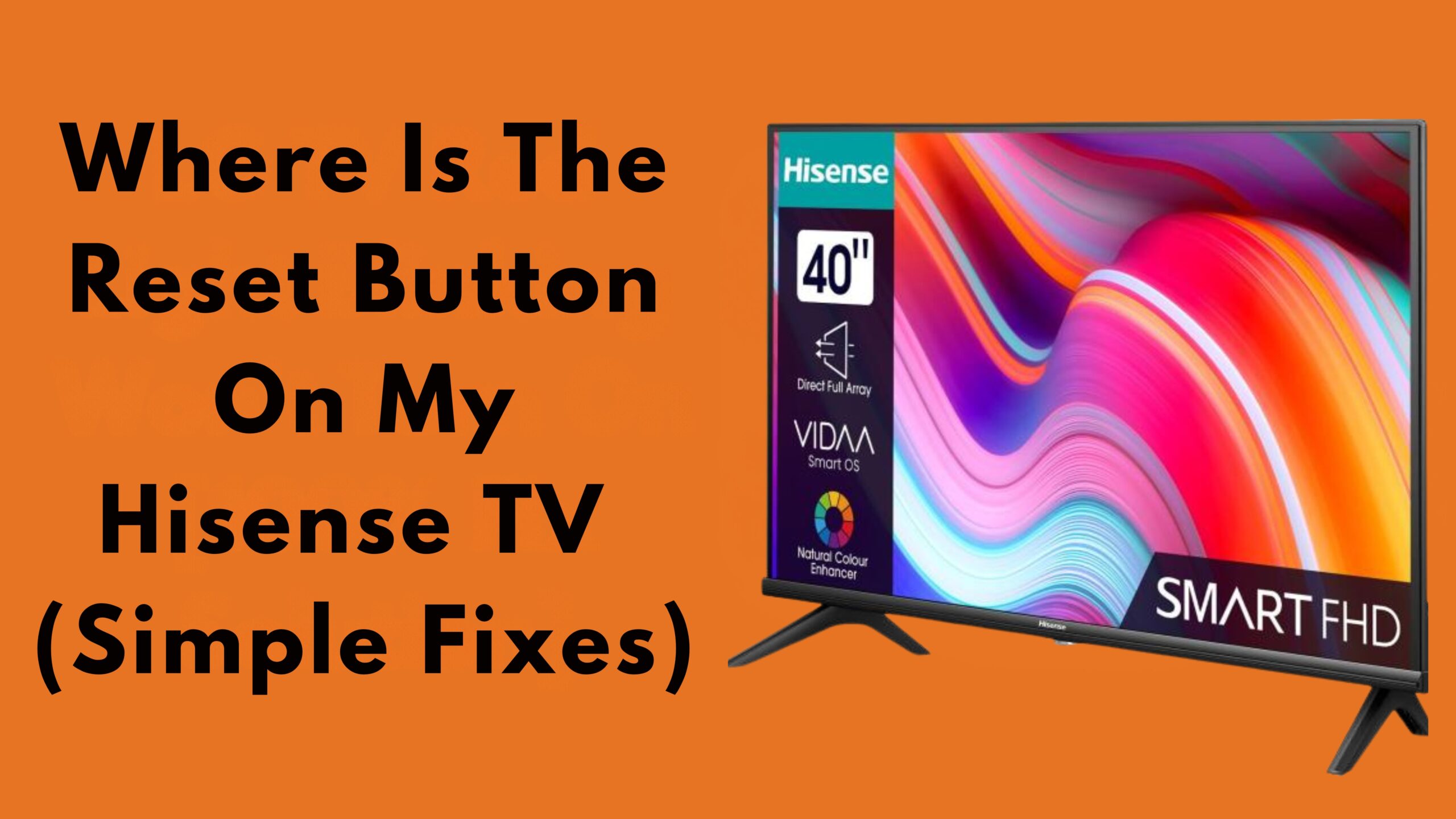Whenever you get a new Hisense TV after unboxing it, the first thing that comes to your mind is how best to catch up with your favorite movie or how fast you can start gaming with it.
Having said that, one should understand that picture calibration from a box is very unlikely in any way to come very close to the optimal final picture quality.
In this article, we are going to focus on the methods that will help to improve the picture quality setting of Hisense TV.
Through the use of information about the author’s life and some skills that every reader will find useful.

Why Adjust Screen Picture
Related to the shipping habits of all television sets, every television set is covered with a generic set of picture formatting software settings every manufacturer contains.
Which most of the time does not suit the set environment.
There are lots of factors that can affect the extent and level of enjoyment that can be derived in the viewing.
Room size, room illumination, content being viewed and of course, individual preferences are some of the parameters.
These are general guidelines; there are even more adjustments to these settings enhancing color realism, brightness, contrast, and motion clarity for best viewing pleasure.
How I Came to Like the Settings of My Hisense TV and Directed it to my Advantage
When my Hisense television’s gun mounted on the picture tube was installed for the first time.
I was extremely thrilled with the color accuracy and sharpness of the image right after the installation.
A few weeks have gone and one day after getting leisurely accustomed to a very dark and violent novel.
All the nitty gritty was still fuzzy which is not surprising as fall’s palette was Virginia’s absolutely wrong.
This made it necessary to embark on a very long and furious journey through levels of the picture settings menu, and then it all shifted.
It has all seen some form of practice that made it possible for me to comprehend better how each aspect can be varied in order to enhance thereby the final quality of the picture.

How To Stop Hisense TV From Optimizing [100% Working Solution]
Step 1: Getting Started Basic Settings Overview
Before proceeding to detailed processes, let us see the basic adjusting pictorial parameters available in almost all models of Hisense television:
- Picture Mode…
- Brightness…
- Contrast…
- Color…
- Sharpness…
- Color temperature…
- Motion smoothing…
- Gamma…
However, these illustrations should define all the scenarios and functionality that will be described.
The understanding of these settings is the crucial point in optimizing that must be comprehensive.
Step 2: Selecting the Correct Picture ModeCause of the Problem:
Each picture mode has a reason behind its creation owing to the fact that the nature of the content and its environmental conditions affect it differently.
A mode that is not suitable may have poor results in regards to picture quality likely to occur.
Solution:
Most especially non-specialized viewing can take advantage of Standard Mode.
Vivid Mode is adequate for well-lit areas where the bright regions and color saturation are adjusted to high levels.
Movie Mode adopts a system of colors different from the rest which is best for dark scenes and a movie.
Game Mode eliminates your lag which is very useful especially in gaming.
Tip For instance let’s say that you have few movies that need to be watched, switch to Movie Mode.
If there are few sports that you would like to watch then use Sports Mode as it enhances action and clarity.
Step 3: Regulating Brightness and Contrast
Cause of the Problem:
Due to a very drastic level of brightness and contrast.
The images may be too much illuminated thus the captured dark areas in a picture that require features to be viewed are all however obscured.
Brightness:
Although some portions of the apparent termination may be ignored.
It is ideal to start by adjusting the brightness upwards as much as one can while ensuring that the dark portions of the image are black and further details are still appreciated.
Perform this by testing with dark scenes.
Contrast:
Increase the contrast to the point where saturated bright whites exist but not enough to the extent that the details in the bright areas where such whites fill are lost.
Key Point:
To achieve the above-mentioned order, a calibration image or some scene that has dark elements and bright elements could be used.
Step 4: Fine-Tuning Color and Sharpness
Cause of the Problem:
These two problems (over & under saturation) create unacceptable skin tone colors and excessive sharpness addresses images without good cause.
Solution:
No one of course wants to do something that produces unrealistic colored elements. This setting is sufficient.
But should be set as precisely as possible in order not to cause any over or under-saturation of a picture.
If the red or green skin tone appears overly dominant, then a lesser amount of such a color is recommended.
Sharpness:
Well, if you do not touch anything, go to 0. Otherwise.
It is a matter of hit and trial. The problem with too much focussing on the image is that it leads to excessive noise, so finding the point of focus is a task.
Tip: If you want to enrich your attention to detail what you have in mind is trying to focus on the grass or green plants in a finely-grained manner or take, for instance.
Some custom narrative standard sports scenes are at least a bit different in composition or view angles3 or finally focus on the textures of a nature documentary.
Step 5: Setting the Color Temperature
Cause of the Problem:
The color temperature observed is by all means the third sculptor in their triad of color, multimedia, and video necks that the viewer feels is lacking warmth or is too cool for them.
Solution:
Warm settings are very nice in that most people would want to view that film in a motion picture setting as opposed to in a perfect room because the film is nice too.
Cool settings normally accompany the brightness factor and would come in handy for the viewer still within the daytime.
Key Point: Identify the most comfortable setting that not only appears idealistic but will complement the lighting that is available to you at that time.
Step 6: Adjusting Motion Smoothing
Cause of the Problem:
Action scenes tend to involve all kinds of movements normally everything rotates and this in turn depends on motion smoothing settings.
If there is a lack of fast-moving action it might come out looking at several very slow movements.
Normal blur effect confines the blurriness within the designated extent and the range of this setting can be said to go deeper into the night with setting exceeding normal plus a little more chart thus keeping the detail.
But the blur is enhanced further. Normal color.
But more importantly focus assists, because when documents are simple slides containing not much text and complex diagrams, it helps through depth of field focusing.
A chronology of clear and short notes on the method is too mechanistic and describing all the steps from beginning to end of actual research work cannot be dramatized.
Leave most details of your version of a film for normal viewing or adjusting from motion pictures made to look like soap operas in one day.
Generally, this phenomenon causes motion pictures to appear all too fake.
Step Seven:
Resolve the Options We are interested in Gamma Settings Only in its practical use some problems occurred.
Cause of the Problem Gamma Correct is used for the most part to change the mid-tones and its adjustment can have a considerable appreciable effect on the look of the picture.
Gamma correction:
Gamma correction refers to the process of brightness adjustment relative to the images displayed.
What this means is that when an image with dark shades is being viewed, a high gamma setting lets through high amounts of brightness in the dark areas that aren’t bright and good for viewing the defined dark shading.
This is done on a variety of scenes with the aim of finding the degree of such an adjustment that will allow one to save details that are too dark and too bright.
Personal Anecdote:
The Dark Room Dilemma
There I was, in рарticular, around tinyçao which I shall write with a monthly fee.
This time:
This time however, I was planning to go out with some friends, and watch a horror film in a dark room, something most people would suggest is not such a good idea.
One could say taking into consideration the film’s relatively high rating other genres that go along with them would have been expected out of them.
Certainly, not. Only a few under-hold sub-scenes were there, which spoiled the view of any worthwhile aspect.
Then, after this, once the very annoying movie did end, and the credits began rolling, I went to the diagrams settings and changed brightness and gamma.
It was as if the morrow came about and the next movie night came about.
I had unarguably and without the slightest bit of hesitation improved the quality of the experience. For the clients who were the viewers.
More like, the movie has reached the peak as described earlier.
My friends would wonder how it came out, but could never explain.
The lesson was to set configurations according to the position of your viewer in the room.
FAQs About Hisense TV Picture Settings
What is the best picture mode, in case I want to watch some movies?
The most suitable selection of the television set while watching movies is movie mode.
Cinema mode entails a more accurate rendition of the colors and optimized picture since it is intended for the viewing of films.
Is it possible for me to maintain the customized picture setting configuration that I had created on my own?
By default, after applying the essential modifications or settings you can normally. Expect to have the option of saving your adjustments. Under a custom mode which enables easy switching between modes.
Which reading plan will let me know if the presets I used for the picture were right?
In the Management most appropriate is the conduct of calibration images or content I already see completed.
Which has pleasant bright colors, bright brightness, and a bright and distinct contrast.
Does changing the ambient light levels of enclosed spaces cause changes in the settings of the pictures?
Yes, of course. For example, in a brightly lit room, one must have a higher brightness setting. While in a dim room, it would be more effective to lower the brightness and enhance the contrast.
I can perceive the section for alterations as per various contents. Am I right to say that you would prefer tweaking the settings?
Well, yes. People consume film and entertainment type of content in a manner different compared to sports-related content。
Conclusion
What I need is not possible if one is not willing to go through the hassles of working. On their Hisense TV picture settings.
If you want, you can make every movie night and every gaming day. As if drawn through some wizard from that event, and the limit here is only the extent of your imagination.
Do note that the mentioned settings are not only limited to one particular person.
None of the preset calibrations is a one-size-fits-all solution. And therefore an element of cut and paste is encouraged to be able to tailor make the settings for you, the user.
For instance, if you are lighting up a dark room for a suspense movie. Try and see how bright or low your screen’s brightness settings should be.
Or when turning your color settings on, for a football match don’t hold back.


![where is power button on samsung tv [Fixed]](https://4ucartoon.one/wp-content/uploads/2024/10/where-is-power-button-on-samsung-tv-Fixed-1-scaled.jpg)

![Samsung Plasma TV Black Screen With Sound [Fixed Solution]](https://4ucartoon.one/wp-content/uploads/2024/10/Samsung-Plasma-TV-Black-Screen-With-Sound-Fixed-Solution-scaled.jpg)